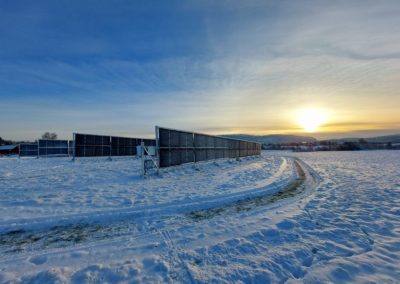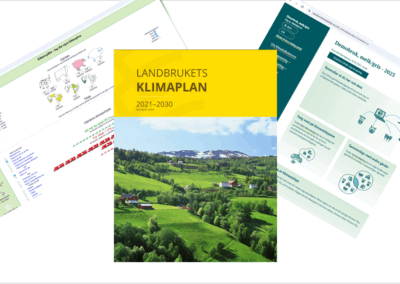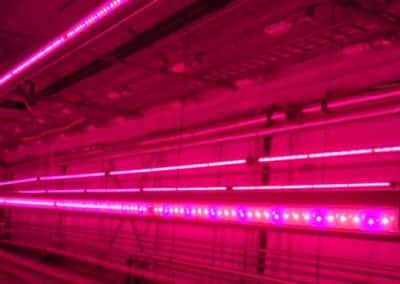Solar cells convert solar energy directly into electrical energy. The energy can be used directly in electrical appliances, stored in batteries, or transported to the consumer via the transmission network. Local production of electrical energy has become more interesting as the energy demand increases and the transmission network is not developed to take the energy peaks that are coming. Domestic production of electrical energy can also at times be too low in relation to consumption.
In periods, a good deal of electricity is already imported into Norway. Local production of electrical energy from the sun is a good climate measure rather than importing electricity that can be produced in coal-fired or oil-fired power plants abroad.

On the farm, there are many buildings with large south-facing roofs with good solar radiation. These are well suited for mounting solar cells. Steel sheet roofs are widely used on farms. This results in low installation costs and a long lifetime of the solar system. Low energy consumption on many farms in the summer months, on the other hand, means that you are not allowed to use the energy internally on the farm. Surplus energy must be sold to the electricity grid, and this results in poorer profitability than if all the electricity could be used internally.
Solar panels today have an efficiency of 18-20%. With today's technology, the efficiency can be increased to 22-24 %. Further development requires a different technology from what is used today (silicon). What has the greatest impact on energy performance is location, shading conditions and orientation of the panels.
Climate benefit
The carbon footprint for solar systems is currently around 10 g CO2eq/kWh in the production of panels and equipment. This will be drastically reduced over the next 20 years. There are no or minimal emissions related to operation and maintenance.
The climate effect of producing solar power depends on what we compare it to. Compared to Norwegian-produced electricity from hydropower, the use of solar cells will only have a marginal positive effect on CO2- the accounts. Compared to the European residual mix, solar power will have a very positive effect on CO2- the accounts.
Economy
How profitable it is to invest in solar systems depends on the price of electricity in the grid. High electricity prices make it more profitable to produce the electricity yourself. When the price of electricity is very high, there is a great demand for solar cell systems to be installed, both on private houses and commercial buildings. The demand is now so great that it is difficult to obtain enough facilities, and this in turn drives up the price of the facilities. Innovation Norway can provide support of up to 35% to solar cell systems in agriculture for systems where the energy is used for commercial purposes on agricultural properties.
The total cost of installing solar cells on the roof varies widely in price depending on which solution is chosen and whether additional roof work is required. The repayment period for such an investment will often extend up to ten to fifteen years, and in some cases even longer. The lifetime of a solar cell system is from 30-40 years. The efficiency will decrease somewhat over time. The production of electrical energy in a solar cell plant is greatest on sunny days. Energy production is not dependent on hot days - it is relatively greater on cold days with a lot of solar radiation (March-April).
More information on the topic
Watch a film about solar cells from NDLA https://youtu.be/xYk5UeT31is



